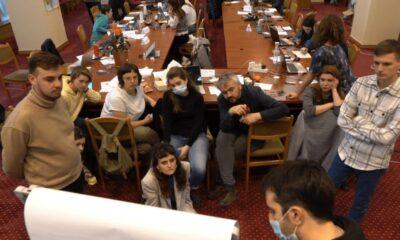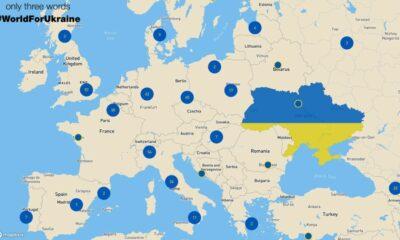Economy
Russia uses Transnistrian gas debt as political weapon against Moldova/INTERVIEW
Reading Time: 6 minutesThe Republic of Moldova is aiming its energy policy towards the West. The Russian Federation, which is Moldova’s only natural gas supplier, seems irritated that its partner wants to obtain different energy sources in order to be more independent and not fully rely on Gazprom.
The Republic of Moldova is aiming its energy policy towards the West. The Russian Federation, which is Moldova’s only natural gas supplier, seems irritated that its partner wants to obtain different energy sources in order to be more independent and not fully rely on Gazprom.
To better understand the energy challenges Moldova faces, reporter Valeriu Gonta conducted an interview with Emmet Tuohy, research fellow at International Centre for Defense Studies based in Tallinn, Estonia.
Mr. Tuohy is in charge of regional defense issues, energy policy and cyber security. He covers the issues of the Black Sea countries, particularly Moldova, Ukraine and Georgia.
Moldova.ORG: Moldova and Romania have agreed to start building a joint pipeline on August 27, 2013. As Romanian President Traian Băsescu said in Chișinău this week, the two countries are expected to be interconnected by the beginning of winter 2014. Why is such a project important for Moldova?
Emmet Tuohy: This pipeline project is tremendously important to Moldova above all because it represents a real possibility of ending the country’s complete dependence on Russia—currently the source of 100% of its natural gas imports. It is a welcoming sign to see Moldova’s leaders taking this step—in close cooperation with their EU and Romanian counterparts, of course—because continued energy supply dependence brings with it three key areas of risk.
First is the physical risk of supply interruption, which in Moldova’s case is not simply hypothetical: for example, in the winter of 2005/06, Gazprom cut off supplies, forcing municipal heating systems to shut down due to the lack of alternative fuel sources.
Second is the economic risk of higher long-term prices. Gazprom claims that its long-term contracts are fair, and provide “stability,” but considering the unresolved Transnistrian debt issue, stability is certainly not a factor in the two sides’ energy relationship. Moreover, not only are Gazprom’s prices relatively high—Moldova paid $392 per thousand cubic meters in 2012, more than the average paid by (far wealthier!) European countries—but its business model locks countries into paying oil-indexed prices at a time when the long-term trend lines for gas point downward thanks to increased LNG exports from the Persian Gulf and the United States, and to expected shale gas supplies from countries as close as Romania and Ukraine.
Third is the political risk. Gazprom and its associated entities are not traditional commercial enterprises operating according to the dictates of the market. Instead, they play a defined role as an instrument of the Kremlin’s geo-economic and geopolitical policy, as evidenced by Gazprom’s decision to continue making massive capital investments in expensive bypass pipelines like Nord Stream II and South Stream in the face of significant (foreign) shareholder opposition.
In Moldova’s case, we see the politicization of energy in the conflict over Transnistria, where Moscow has insisted that the separatist region’s estimated $4 billion gas debt be paid by Chișinău before any final settlement can be reached.
If used prudently, the pipeline—which will supply up to 1.5 billion cubic meters (bcm) per year, an amount roughly equivalent to right-bank Moldova’s annual consumption—will reduce these risks. At the same time, it will also deprive Moscow of valuable leverage it has sought to use both in the conflict-resolution process and in the broader effort to dissuade Chișinău from choosing a Euro-Atlantic foreign policy orientation rather than the so-called “Eurasian vector” that would bring the country closer to Russia.
Moldova.ORG: Could Russia’s Gazprom ask for certain fees given that the gas transported from Romania would use the same pipeline network of Moldova which is currently owned by Russia? Would the gas price be affected?
Emmet Tuohy: When we speak of Gazprom in Moldova, there are two dimensions to consider.
First, on a domestic level, the Russian firm does own a controlling stake in MoldovaGaz, operator of the pipeline transport and distribution network. Certainly, this is a potential obstacle: here in the Nordic-Baltic region, Gazprom-owned or -controlled network operators have vigorously sought—without success—to prevent supply diversification, whether for example by suing to block new legal measures (as in Lithuania) or co-opting new infrastructure projects (as in Finland).
Although it remains possible, it is not likely that such efforts to interfere with diversification will be made in Moldova. There, as in other members of the Energy Community (which the country joined in 2010), gas distributors must operate on a market basis. This does not mean that they have to lose money: as Energy Minister Valeriu Lazăr noted last month, gas sales from the Iaşi-Ungheni pipeline can be attractive, “including for MoldovaGaz.” In the unlikely event that the company does try to block or raise the prices of such sales, the government would of course have the ability to ensure that it complies with the law.
Second, on an international level, Gazprom itself could raise objections; it has analogously labeled Ukraine’s reverse-flow imports of (originally Russian) gas from neighboring EU countries as “a fraudulent scheme.” Yet, even if Romania ends up re-exporting gas from Russia (on which it depends for 20-25 percent of its consumption) to Moldova, there is no legal reason why Gazprom would be able to interfere—Romania has clear title to the gas.
In any case, the Russian firm is unlikely to try to do so, both because of the small leverage Moldova has as a transit state (some 20 bcm per year of Russian gas crosses Moldova en route to the Balkans), and because of the possibility that Iaşi-Ungheni could actually benefit it in the future, according to some sources, by being used in the reverse direction.
Moldova.ORG: Moldova’s breakaway region of Transnistria has a huge debt for Russian gas consumption. Russia claims it is Moldova’s responsibility to cover the costs. How should all three parties (Moldova, Transnistria and Russia) handle this situation?
Emmet Tuohy: For Moldova, first and foremost it needs to develop alternative sources of gas supply—as it is doing with the Iaşi-Ungheni pipeline—so as to reduce the ability of the Russian side to use the debt, or any other such pretext, as a political weapon. Beyond that, the Moldovan government needs to be aware and to make clear that the gas debt has continued to be an issue for reasons having nothing to do either with gas or with debt; instead, it’s been a manifestation of the larger divide over the future status of Transnistria itself.
Statements that portray the debt as purely economic—such as former Prime Minister Filat’s argument that the payment should be “settled by consumers,” i.e., the Transnistrian companies such as the MMZ steel plant in Rîbniţa that have actually consumed the gas—are precisely what is not needed.
Due to their own interests in greater trade with the EU and the outside world, the major economic players on the left bank of the Nistru (another key example is the Sheriff conglomerate) are likely to be a key constituency pushing Transnistria towards closer integration with the rest of Moldova; it does not therefore make sense to place the burden of a fundamentally political dispute on these companies’ shoulders.
For Transnistria, continuing the theme above, it has to recognize that the continuing presence of the debt—even if it is a political issue—creates a climate of economic uncertainty that clouds the future of commercial enterprises crucial to the region’s future development and progress. In order to attract more foreign investment and build on its existing steps towards economic integration—it now exports more to the EU and the West than it does to the countries of the CIS—Transnistria’s leaders have to work to ensure that the costs its businesses face for inputs like energy are both transparent and predictable.
Ultimately, as the “creditor,” Russia has the most room to operate in solving this issue quickly. It should recognize that its goal of creating a broader Eurasian economic space that includes Moldova is not furthered by the outstanding climate of uncertainty surrounding its energy relations with both sides of the Nistru.
Moreover, its official position on the gas debt—that it is all the responsibility of the Moldovan state, the only government it recognizes as sovereign on the left bank—is neither consistent with its actual practice when it comes to, say, military or political relations with Tiraspol, nor is it realistic.
Since full repayment by the Moldovan government is unlikely, especially in the short term, Russia should recognize the realities on the ground. It can do so by, for example, offering a full or partial cancellation of the debt in exchange for guarantees that its legitimate economic interests (e.g., the investments made by Russian citizens) in the region will be respected by all parties to an eventual conflict settlement.
Moldova.ORG: The “5+2” talks on Transnistrian conflict resolution process seem to bring sterile outcome. Moreover, the situation in the Security Zone has become tenser lately. What improvements should be made in order to make the negotiations more productive, with better results?
Emmet Tuohy: In the immediate recent period, the situation has indeed become more tense in the Security Zone—the decision by the Transnistrian authorities in April to set up new checkpoints around the city of Tighina (Bender, in Russian) being particularly unhelpful—but it would also be unfair to call the 5+2 process “sterile.”
While an agreement on final status is clearly some way off, the process has brought real results, especially on the working group level. For examples, we can point to the resumption of rail transport on the Chișinău-Tiraspol-Odesa route; the construction of the Gura Bîcului bridge; the restoration of landline telephone links, and other progress on customs, legal, and technical issues of considerable importance to the everyday lives of citizens on either side of the conflict line.
In the near-term future, both conflict parties should strive to avoid instinctive, knee-jerk responses to moves taken by the other side, taking into account the domestic and international contexts. Transnistria, for example, elected a new president in 2011 at the same time it moved to a semi-presidential system, weakening the role of the office while strengthening that of the Supreme Soviet, the region’s legislature.
Clearly, this is a recipe for political maneuvering and tension between the two branches of government. Accordingly, the Chișinău side should understand moves such as Transnistrian leader Evgeni Shevchuk’s decision to move Parliament to Tighina (thereby disrupting its operations and temporarily weakening its capacity) in this light, rather than reflexively taking it as an act of aggression.
Such was also the response of the Transnistrian leadership to the recent Moldovan government decision to erect passport-control points along its side of the internal “border” with the separatist region. Yet, this move was not intended to exacerbate the conflict or to change the situation on the ground, but is simply a logical part of the broader Moldovan effort to demonstrate its capacity to secure the country’s eastern border in the run-up to the critical EU summit in November.
Economy
Moldova will receive a disbursement of 36 million euros as part of the the Economic Recovery Plan
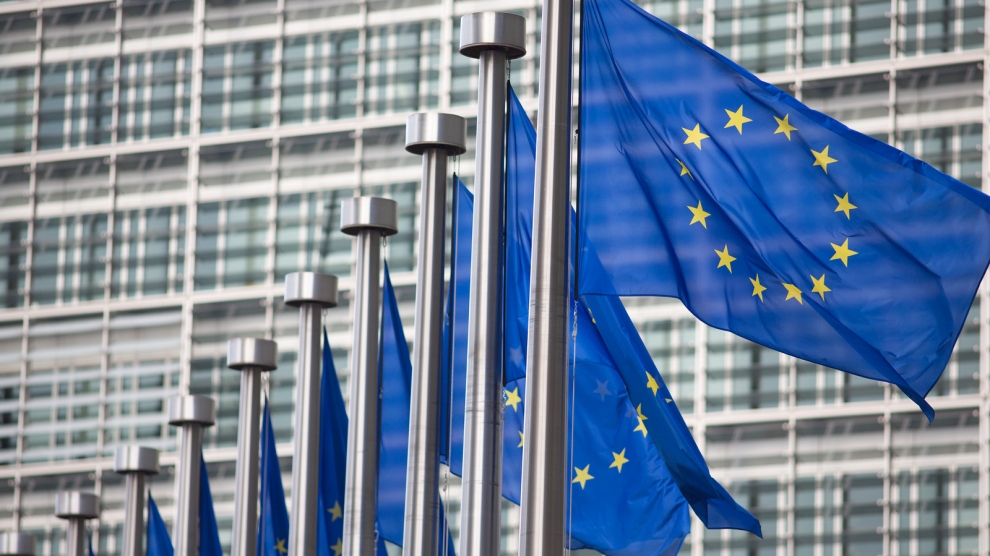
This week, the European Commission approved the disbursement of 36 million euros in grant money for the Republic of Moldova. The announcement was made by Deputy Director-General for Neighbourhood Policy and Enlargement Negotiations at the European Commission, Katarina Mathernova, who paid an official visit to the Republic of Moldova between September 13-15, together with Managing Director for Russia, Eastern Partnership, Central Asia, Regional cooperation and OSCE, at the European External Action Service, Michael Siebert.
The EU officials had meetings with President Maia Sandu, Minister of Foreign Affairs and European Integration, Nicu Popescu, Speaker of Parliament, Igor Grosu, Prime Minister of the country, Natalia Gavrilita, as well as key representatives of Government, international financial institutions and the civil society, according to a press release issued by the Delegation of the European Union to the Republic of Moldova.
Beside such topics as the EU-Moldova relations and prospects, the priorities of the reform agenda of the new Moldovan Government, preparations for the Eastern Partnership Summit at the end of the year and the Transnistrian conflict settlement, the officials also discussed the EU assistance in support of reforms and the Economic Recovery Plan for Moldova, which was announced in June with a total EU support of 600 million euros over the next 3 years.
“The first measures under the Economic Recovery Plan will shortly materialize, with the expected disbursement of 36 million euros in grant money under budget support programmes to support the authorities’ efforts to fight against the consequences of the pandemic. Moldova can count on EU’s assistance on its path to reforms and to recovery, bringing tangible results to citizens,” Katarina Mathernova stated.
The plan is based on assistance provided by the European Union through various bilateral and regional instruments, aiming to mobilize the funds in the form of grants, loans, guarantees and macro-financial assistance.
“The Economic Recovery Plan for the Republic of Moldova involves much more, not just this financial support provided immediately. It must help digital transformation, strengthen infrastructure, energy efficiency, education and support small and medium-sized enterprises,” the EU official also said.
As Prime Minister Natalia Gavrilita informed, “The Economic Recovery Plan and the 5 flagship initiatives for Moldova in the Eastern Partnership will directly contribute to the reform and consolidation of institutions, stimulate long-term socio-economic development, bring direct benefits to citizens, and unleash new economic opportunities through promoting the green agenda and digitization. Small and medium-sized enterprises (SMEs) have been hit hard by the crisis. Promoting and diversifying access to finance and reducing collateral requirements will be essential in supporting economic operators. We are grateful to the EU partners who will launch two programs to support 50 000 independent Moldovan SMEs to adapt to the new conditions.”
President of the Republic of Moldova, Maia Sandu, welcomed the decision of the European Union to disburse about 745 million lei in grant money, as the official page of the President’s Office announced. “EU support comes after a long period of freezing of European assistance, caused by former governments. We managed to relaunch the political dialogue with the European Union and resume financial assistance. The Republic of Moldova is gradually regaining the trust of its strategic partners. This European support is also a signal of encouragement for the new Government team in its commitment to clean up the institutions, fight corruption and launch development programs in the country,” said Maia Sandu.
Photo: unknown
Economy
Romania and Moldova signed a partnership memorandum pledging to cooperate in promoting their wines
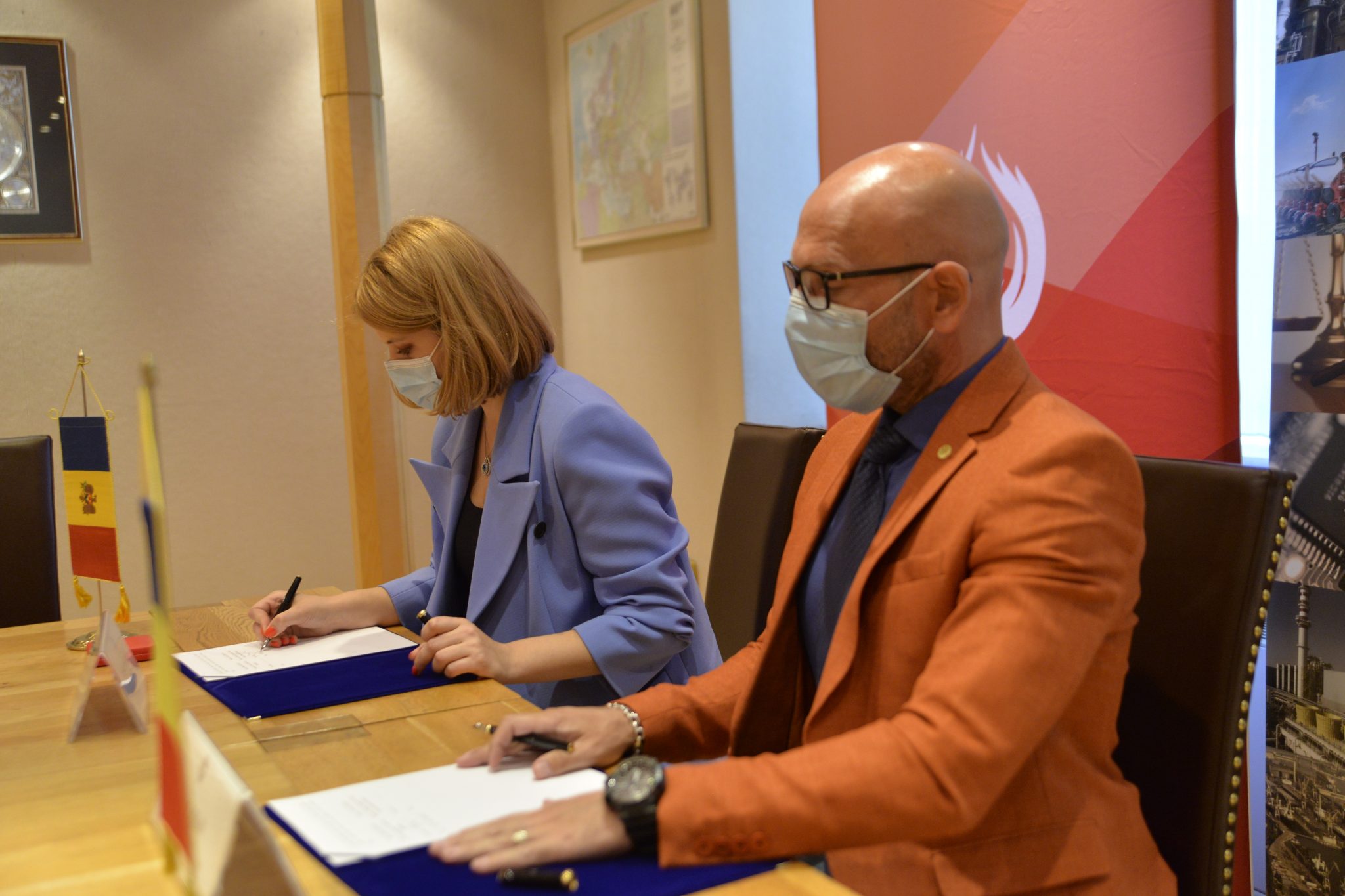
The Chamber of Commerce and Industry of Romania (CCIR) and the National Office for Vine and Wine (NOVW) of the Republic of Moldova signed, last week, a memorandum of cooperation on organizing joint promotional activities in the markets of common interest, as the CCIR announced.
China, Japan or the USA are just some of the markets targeted by the Romanian and Moldovan institutions. The memorandum also involves advertising activities for wines from common indigenous varieties, promoting the oeno-tourist region, developing a tourist route in the two states, exchange of experience, study visits, and mutual support in identifying new export opportunities. “We are very confident that this collaboration between our organizations will lead to sustainable economic growth and a higher degree of well-being among Moldovans and Romanians,” claimed Deputy Secretary-General of CCIR, Bogdan Visan.
On the other hand, Director of the NOVW, Cristina Frolov, declared that no open competition with Romania is aimed at the governmental level of the Republic of Moldova. “This request for collaboration is a consequence of the partnership principle. Romania imports 10-12% of the wine it consumes, and we want to take more from this import quota. Every year, the Romanian market grows by approximately 2.8%, as it happened in 2020, and we are interested in taking a maximum share of this percentage of imported wines without entering into direct competition with the Romanian producer,” the Moldovan official said. She also mentioned that Moldova aims at increasing the market share of wine production by at least 50% compared to 2020, and the number of producers present on the Romanian market – by at least 40%.
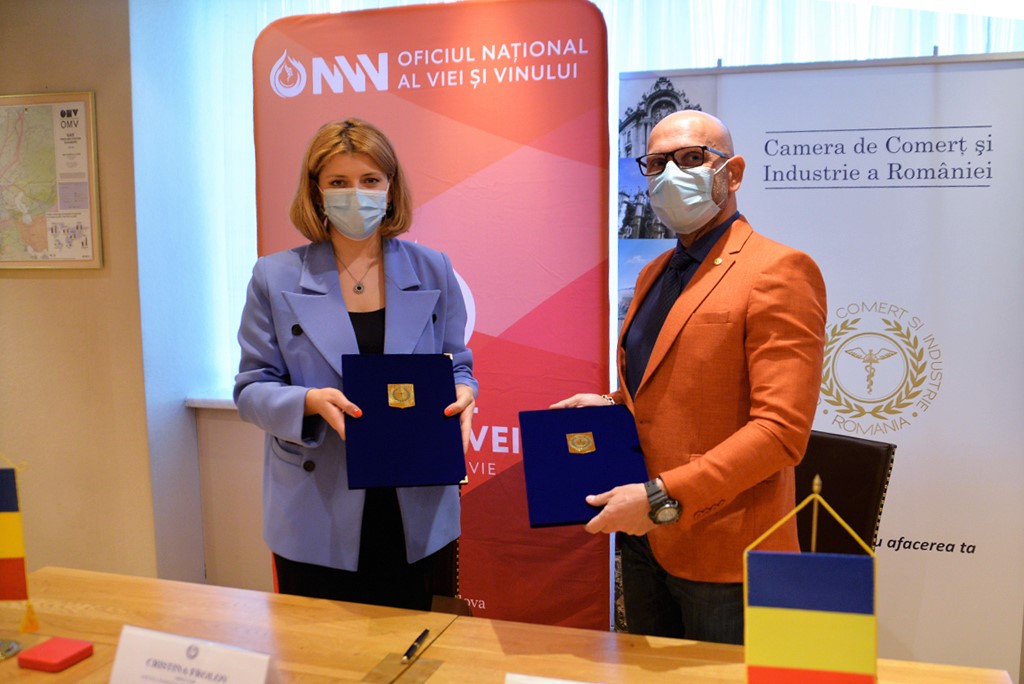
Source: ccir.ro
**
According to the data of the Romanian National Trade Register Office, the total value of Romania-Moldova trade was 1.7 billion euros at the end of last year and over 805 million euros at the end of May 2021. In July 2021, there were 6 522 companies from the Republic of Moldova in Romania, with a total capital value of 45.9 million euros.
The data of Moldova’s National Office of Vine and Wine showed that, in the first 7 months of 2021, the total quantity of bottled wine was about 27 million litres (registering an increase of 10% as compared to the same period last year), with a value of more than one billion lei, which is 32% more than the same period last year. Moldovan wines were awarded 956 medals at 32 international competitions in 2020.
Photo: ccir.ro
Economy
Moldova’s hope to be a top walnut exporter and its main difficulties

The Republic of Moldova has perfect weather conditions for growing walnut trees, that creating a great potential of walnut production and trade, especially on international markets, where the demand is way higher than the product’s supply. National and international experts believe that the country’s walnut production industry is on the verge of important transformations, which could lead to increased yields, quality and competitiveness worldwide.
According to authorities, Moldova exports 34-35 thousand tons of walnuts in shell, which is about 7% of the total export of fruit and 5% of the total export of horticultural products. The export value is assessed as being $120 million, that being 57-60% of the total fruit export value and about 50% of horticultural export value. Most of walnut crops are exported to the EU countries, such as France, Germany, the Netherlands, Romania and Austria. The country’s exports were among the world’s top 10 when it comes to the highest dollar value of the product during 2020.
Viorel Gherciu, Minister of Agriculture and Food Industry, pointed out that the production in the domestic walnut industry has increased by 55% in the last five years, which ranks Moldova among the main producers in the world.
“The biggest opportunity for this industry is that we are in the geographical proximity of the largest walnut import area in the world, which is the European Union, with almost 40% of total imports in the world. We are on the EU border, with privileged relations, with an Association Agreement. We already enjoy a good relationship in working with European importers, they trust our processors. A very close collaboration has been created and this is, in fact, the guarantee for those who invest in the area,” claimed the president of the Walnut Producers Association, Oleg Tirsina.
The data provided by the National Bureau of Statistics show that there are 34.7 thousand hectares of walnut plantations in the country. 20.90 hectares are represented by orchards. 75% of planted orchards are formed of old varieties trees. 30-35% of the exported production comes from orchards, the rest comes from individual farmers and plantations along the roads. This means that the quality of walnut production is not at its maximum potential. Developing commercial plantations through orchards modernization and extension of walnut varieties would provide double yield and better quality, experts say.
Governmental support in the form of subsidizing solutions, foreign investments and credit options are indispensable for the industry development. One of the financing options is the credit line of the European Investment Bank Project. Since 2016, 15 producers and processors of nuts, almonds and hazelnuts have benefited from these loans with the total amount of investments worth 8.7 million euros. A further extension of the project would provide another 60 million euros for the modernization of the horticultural sector in general and for harvesting organic walnuts in particular.
Photo: heymoldova.com


